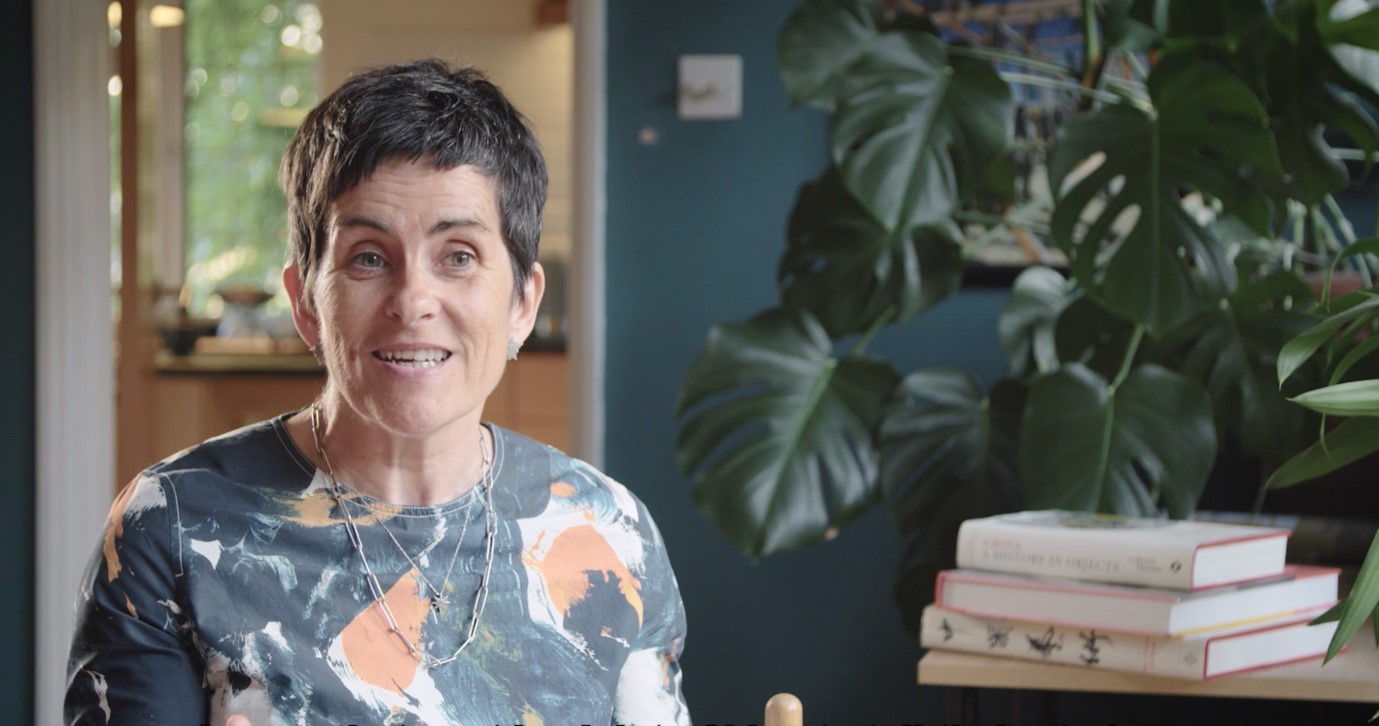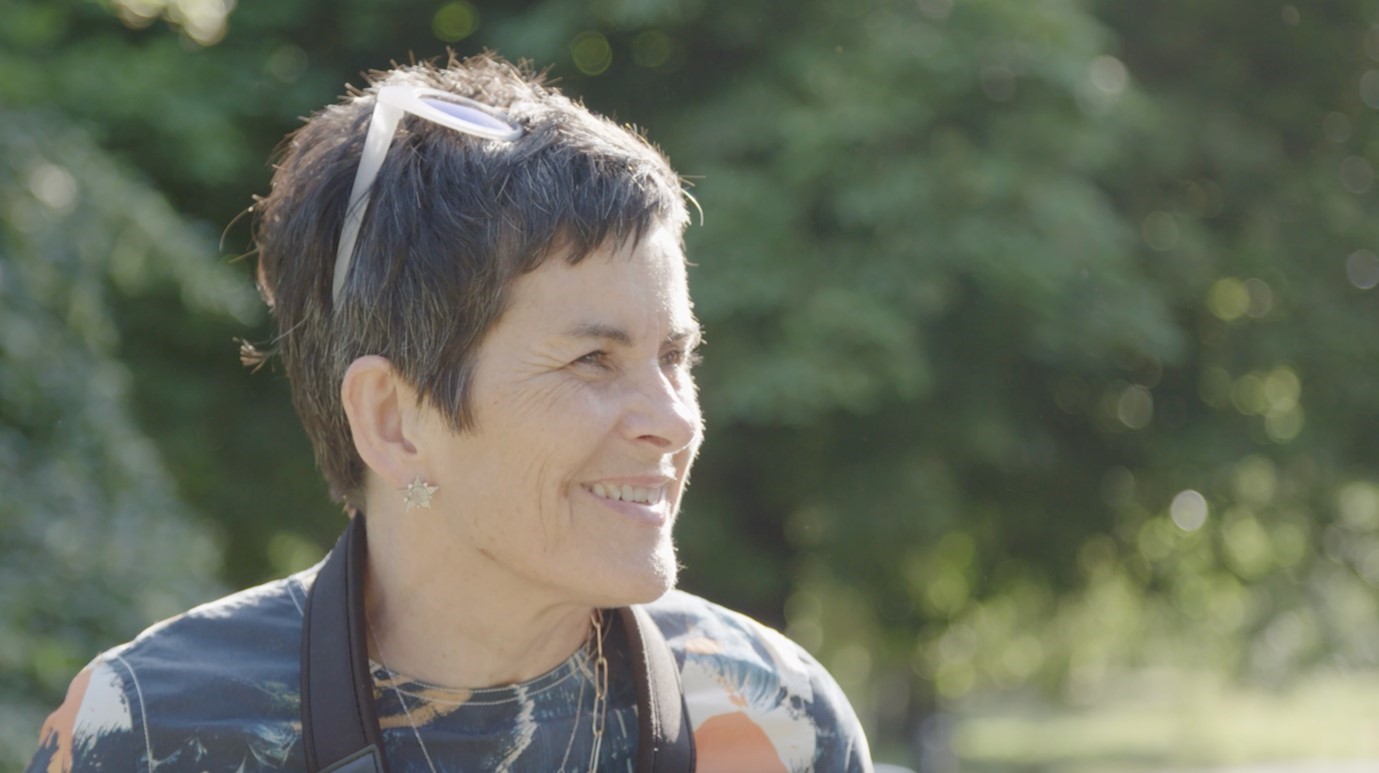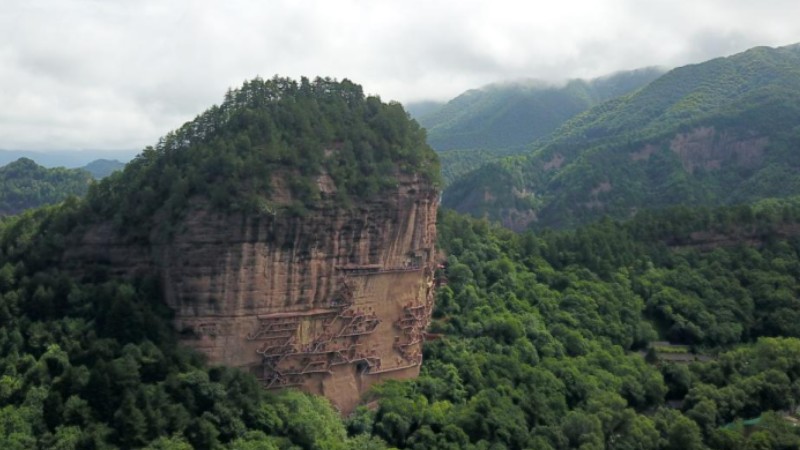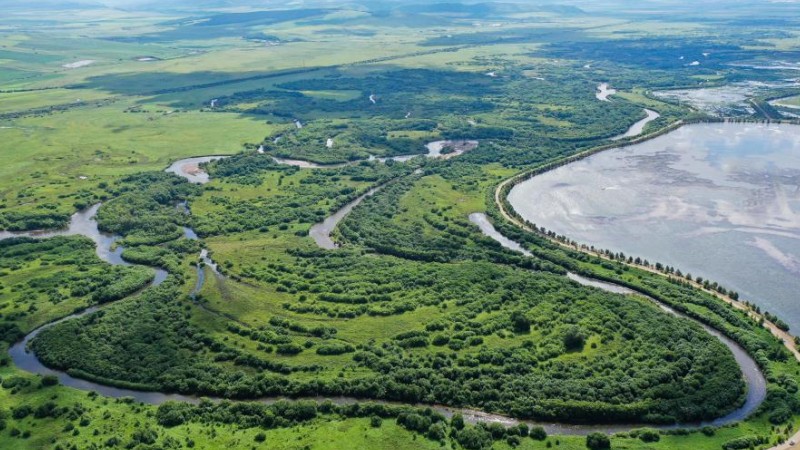Charlotte Jones: Understanding China through documentary
On an early summer day in the picturesque city of Bath, nature’s lush greenery has enveloped everything in its gentle embrace. Within this serene setting, People’s Daily Online interviewed Charlotte Jones, an esteemed UK producer and the driving force behind Mustang Films. The interview was centered on the documentary series, China's Greatest Treasures, a project that continues to hold a special place in her heart, even though it was completed four years ago. To prepare for this project, Jones immersed herself in the study of Chinese Art History, including reading books on Chinese material culture.
In 2019, Jones embarked on an extraordinary journey alongside BBC presenter, Alastair Sooke, and her dedicated team; together they ventured into the treasure troves of Chinese museums and art galleries. Their mission was to explore some of the most exquisite artifacts in China, each piece holding a unique tale. Weaving the connections between ancient relics and contemporary China, the documentary ultimately presents audiences with a fresh outlook on Chinese art and culture.
Throughout the interview, Jones expressed her deep-rooted desire to return to China, as well as her eagerness to capture more authentic stories that resonate with both Chinese and international audiences. Her lens, she emphasized, seeks to illuminate the lives of ordinary Chinese people, giving audiences a glimpse into their dreams, struggles, and triumphs.

Charlotte Jones (Photo/Patrick Shead-Simmonds)
Exploring China today from a fresh angle
People's Daily Online: Even today, China's Greatest Treasures is broadcast on various international platforms, offering a unique outlook on Chinese art and culture. Could you tell us about the inspiration behind this documentary?
Charlotte Jones: The series tells the story of modern day China through some of the country's most extraordinary ancient artifacts. We were looking at a span of about 4,000 to 5,000 years represented by these precious artifacts. We covered a lot of territory of China, including eight major cities, from Xi'an down to Changsha then up to Shanghai and Beijing. Partnering with the Chinese team also opened the doors for us to have access to some of the most amazing museums in China, such as the Shanghai Museum and the Palace Museum.
Since this was going on the BBC, it tells the story of China through a Western lens, using universal themes that would resonate with international audiences. The six themes include Family and Ancestry, The Art of Character, Cosmopolitan China, and Made in China, as well as The Art of China and The Art of Food. Following the steps of the presenter, audiences are invited to go on a treasure hunt, experiencing a modern China that is built on longstanding traditions.
We really tried to present the rich material culture of China from a new perspective. For example, in episode 4, Made in China, we linked the Terracotta Army with today China's mastery over manufacturing. The Terracotta Army is synonymous with China; so many people have seen it and some of the soldiers have been toured all over the world. Yet when you look at the manufacturing techniques, the precision and the artistry that were used to produce the scale of the soldiers and other artifacts like bows, swords found in Qin's Mausoleum, you realized what is there is one of the earliest mass production lines. On site curators and experts also showed our presenter the complex mechanisms and engineering behind the Terracotta Army.
People's Daily Online: In the documentary, the presenter spoke highly of Chinese material culture and the unconventional breadth and depth that the series was able to cover. What were some of the memorable moments during filming?
Charlotte Jones: There were many surprises, especially for our presenter. We went to Shenyang and saw a beautiful piece of Chinese landscape painting in black and white by Dong Yuan of Five Dynasties and Ten Kingdoms period. This was a very different way of viewing artworks in comparison to the viewpoint in the West as the painting was kept in a scroll. We then went up to Shanghai, where we met up with Yang Yongliang, who is a contemporary artist that had studied Chinese landscape painting for over a decade. He translated landscape paintings into a Virtue Reality experience and so when Alastair put on the VR headset suddenly landscape paintings like what he has seen in Shenyang came alive in front of him. There were deer walking up towards him and birds flying around in the visual aesthetics of Chinese landscape painting. So, this was a wonderful experience for him.
Our presenter was also introduced to traditions of Chinese wedding and attended a modern Chinese wedding. He had an interesting talk with the couple who were getting married; the bride felt the sedan chair gave the wrong story of her independence choosing instead to go with an older tradition, which she would enter the wedding behind a fan. As a modern Chinese couple, they engaged with traditional Chinese marriage traditions beautifully.
People's Daily Online: The documentary featured over 20 precious Chinese artifacts, reflecting the rich historical and cultural landscape of China. What is your favorite amongst those featured?
Charlotte Jones: The most spectacular thing was seeing the Da Ke Ding from the Western Zhou dynasty, which was an ancient representation of the link between the Chinese and their ancestors. We saw the modern day version by embarking on a journey to a tomb sweeping ceremony. In the ceremony there was a Ding consists of a big rectangular metal urn, which families put incense sticks inside. The Ding also captivated our presenter, who took part in the ceremony alongside a family. You could see in the presenter's eyes how he could not believe what he was witnessing. It helped him to connect with the idea of worship in China, as well as the long history of ancestral worship and how it works today. It is very rare in England to reflect on how we are linked with our ancestors.

Charlotte Jones (Photo/Patrick Shead-Simmonds)
Appreciating similarities between two cultures
People's Daily Online: China's Greatest Treasures was first broadcast on BBC and then digital platforms in more than 200 countries. Why do you think the documentary was so well received?
Charlotte Jones: I think this was because China's Greatest Treasures shared with international audiences an intimate portrayal of life in China today. It seems crazy that there has not been a lot of this in mainstream media. It is wonderful to present content like marriages and family gatherings, which were documented in our series. The documentary also offers a really great opportunity for people to understand the key things in the lives of modern day Chinese people. The point is that most of the day-to-day things happening in their lives are happening to us and so there is a real empathy between the viewer and the people we filmed in China.
When we made the series, we really wanted to make sure there was a vibrancy and energy to everything from storytelling to pictures and visuals, so it would appeal to an international audience and does not feel like an academic documentary about Art History. We always started with our presenter going on a journey, which he does not really know what will happen, and have fun moments in between. For example, in episode 2, The Art of Character, we kept the lovely interaction between the calligraphy master and our presenter, who has little knowledge of the complexity of Chinese calligraphy. So, China’ Greatest Treasures is a documentary with artistic rigor and authenticity of everyday life.
People's Daily Online: The documentary has also been seen as a meaningful exploration in co-production between China and the UK. In your opinion, what is the value of this kind of cross-cultural collaboration?
Charlotte Jones: I think documentaries, if they are made in the right way can really unlock the similarities between cultures. We could not have gone into China and told the stories that we told without working with a Chinese team on this documentary, because there are such subtleties to the Chinese culture that we would not have picked up. Working with a Chinese team helps us tell a more authentic story, as well as being culturally sensitive when we are in the country. Working on this documentary for both the China and UK teams was an opportunity to learn from each other and share skills. I think it will be wonderful to have more collaboration between countries and to tell their stories through a fresh lens.
People's Daily Online: What new partnerships with Chinese organizations or filming crews do you envision going forward?
Charlotte Jones: There is a big hunger for people to go back to China to tell their stories and I would also like to get back into China. China is somewhere that I think is endlessly fascinating and very unrepresented in stories in international television and media. We are now looking at working with influencers in China. I think this has been a really interesting development because social media in China is huge and it is part of the country’s everyday life from community and paying to everything. What we are hoping to do is inviting influencers over to the UK, comment on some of the people and be part of the stories we tell. The other powerful thing we are doing is to translate a lot of stories made in English into a local language, since a lot of people that we work with internationally do not see the documentaries we make about their cultures, and we would really like to share our work widely.
Photos
Related Stories
- Booming cultural industry accelerates Beijing's urban development
- Qiankun in an alley: weaving East and West in Hutong's cultural tapestry
- Chinese vice president addresses civilization and sinology forum
- Across China: Fusing tradition and innovation in Dragon Boat Festival
- Cultural and Natural Heritage Day marked across China
Copyright © 2023 People's Daily Online. All Rights Reserved.









